Bokehlicious: This is What the Sigma 135mm f/1.8 Art Lens Can Do
![]()
Talk about luck. Before teaching a workshop, “Aperture In Action”, recently, I was handed a pre-release copy of the eagerly awaited Sigma 135mm f/1.8 Art Series lens. What was already going to be a great class instantly got a lot better!
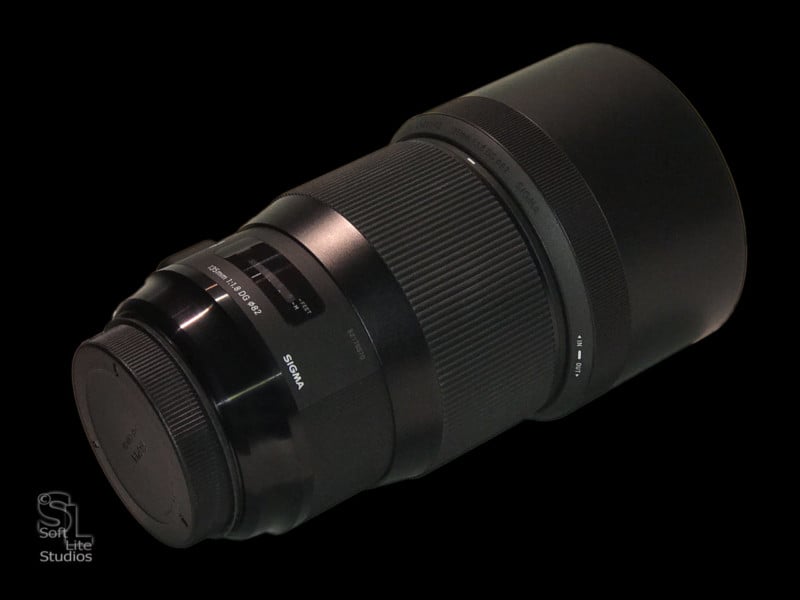
Sigma already has a significant presence in the full-frame, prime lens market, and this lens certainly underscores their commitment to the segment. As far back as I can remember, the 135mm prime lens was the portrait photographer’s lens of choice. When properly executed, it was the lens you knew would provide flattering facial features, sharp focus, excellent color rendition and superlative bokeh in the specular highlights.
For me, the anticipation was high that this lens could fill a gap in the market place that had been vacant for some time. We might all remember the Vivitar 135mm lenses from back in the day and have missed the images created by that venerable piece of glass. The combination of the focal length (135mm) and the potential bokeh creation from the fast f/1.8 aperture are both potentially compelling features. Other Sigma Art Series lenses that I have owned or used have provided very nice bokeh when shot wide open so I was hoping for the same results here.
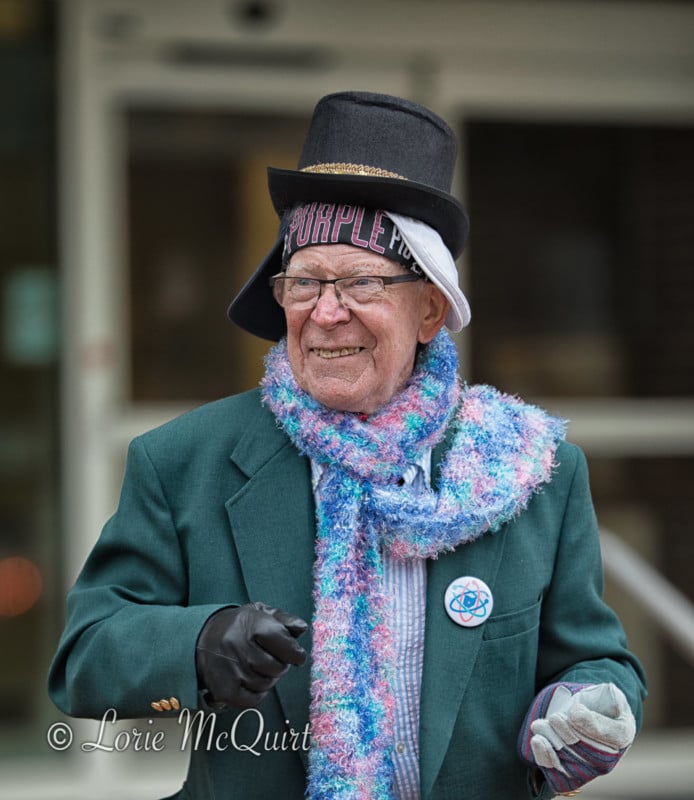
Build Quality
Build quality is apparent the minute you pick up this new lens. It has the weighty heft in your hand that you would expect from a premium quality lens. Inspecting the lens from back to front reveals a solidly constructed mount (in this case a Canon EF mount), a smoothly machined aluminum main barrel, firmly mounted and tactile control switches, a rubber ribbed focusing ring that fluidly spins with just the right amount of resistance, and ultimately culminating in a front optic with a 82mm threaded opening that features a bayonet style outer ring for attaching the included lens hood.
The overall impression is that this is a lens that’s solidly built, with an attention to both quality and detail. The fit and finish look to be top-notch, with the expected signature silver “Art Series” emblem in place and all aspects of operation seemingly smooth and ergonomically thought out.
Sigma touts that with very few exceptions almost all of their lens components and lens assemblies are done in Japan in a single integrated production system. They point to a process of design and manufacture that features not only leading edge technology, but is manned with dedicated, passionate, and highly trained technicians. My general experience with Sigma Art Series products and my impression of this lens so far is that Sigma’s approach to production and design is working.
Optics
Sigma’s 135mm f/1.8 Art Series lens features two SLD (Super Low Dispersion) glass elements and two FLD (Fluorite Low Dispersion) glass elements. The purpose of these glass elements is to help minimize chromatic aberrations, especially in out of focus areas within portraits that capture bokeh or in slender objects and fine tree branches. The net effect is to provide a lens that results in high-resolution, sharply-focused images throughout the entire aperture range of the lens.
Sigma also notes that they done significant testing and design work to reduce flare and ghosting in the lens as much as possible. They have utilized their Super Multi-Layer Coating in this lens and the first images I am seeing bear that out.
Aperture
The lens utilizes a rounded aperture blade design, the purpose of which is to provide round shaped bokeh when shooting specular light outside the depth of field at the lens’ wider apertures. With nine (9) aperture blades being used in the design, it is clear that the bokeh created by the lens should be nicely shaped and very smooth.
Hands On with the Lens
I can tell you that after using this lens, I am sold. I definitely want to have this lens as a tool in my toolkit.
At $1,399, I think that it is a solid value. I would offer the addendum that I personally think that for me, the lens has a very specific shooting application: I see this lens as being ideally suited for either portrait photography or street shooting. I lean towards that wide open, soft background, bokeh infused look. I go out of my way to find it in the compositions I am considering and often change my point of view to include specular, background lighting.
So here’s a little of the blow-by-blow from my first shoot with the lens. After popping off the rear cap of the lens, I gave a quick once over of the mount, nicely made from what I can tell and mated up easily and solidly with the Canon 5D Mark IV that I was shooting. The combination of the body, the grip, and the lens make a solid piece of kit and it felt good in my hands. The lens has some weight to it, but I would say less overall than that of a 70-200mm f/2.8 lens. The lens hood mounts up easily and give a nice solid click when it’s correctly in place.
As I noted earlier, I was teaching a Field Study Series class and the topic of the evening was “Aperture In Action”. Ideal testing ground for 135mm lens, especially one with a f/1.8 aperture capability. After talking with my students, we head off down the street into the throngs of Gallery Hop, our town’s eclectic homage to the arts community on a Saturday night. The route we were to take was, as they say, a target-rich environment. Something about the arts brings out the uniqueness in the crowd and its fashion choices, great fodder for the street shooting crowd for sure.
I found the autofocus system to not only be accurate but surprisingly fast, with pretty quick focus acquisition, even in less-than-ideal contrast situations. The surprise really settled in when I realized that it is pretty consistently beating the focusing speed of my 85mm f/1.2, which is my normal street shooting lens. A lot of the time, street shooting requires quick stealthy shooting so that you can catch that decisive moment exhibited by your subjects. As a back button focuser, I really appreciated the ability to quickly acquire focus, lock it in, and move the camera into the desired position for the shot.
One of my first images was actually of one of my students for the evening. I was showing the group what to look for when trying to create a bokeh effect and how they should evaluate a scene for possible bokeh light sources. The group really liked the image on the preview screen, as did I. The bokeh is soft and creamy, without any real breakdown at the edges. Colors and skin tones both look very natural and have a little bit of a classic warmth to them.
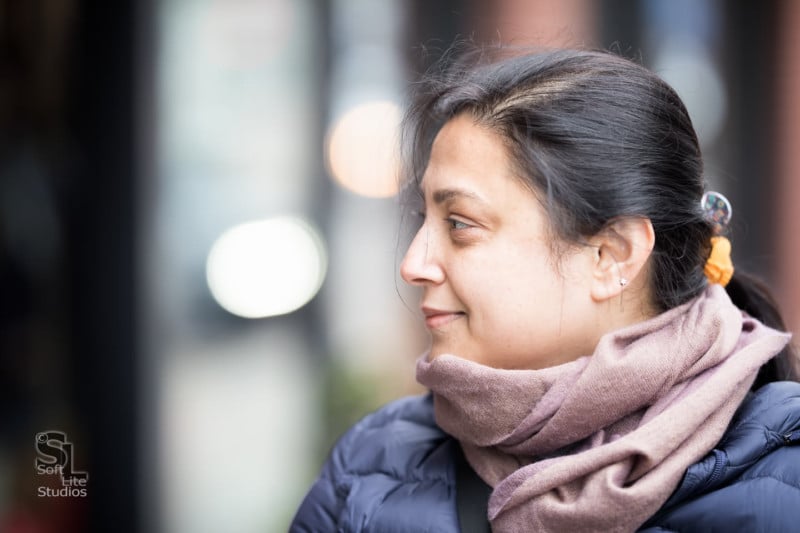
We then came across a little impromptu street quartet that made for excellent street photography subjects. While this is not apparent on the 3″ monitor on the back of the camera, later editing at home shows me an image that holds contrast well and keeps detail in the shadows quite nicely. Even though I know this is more of a sensor issue when it happens, I do know the lens plays a role and I am pleased with how clean the image is and how little noise reduction it needs.
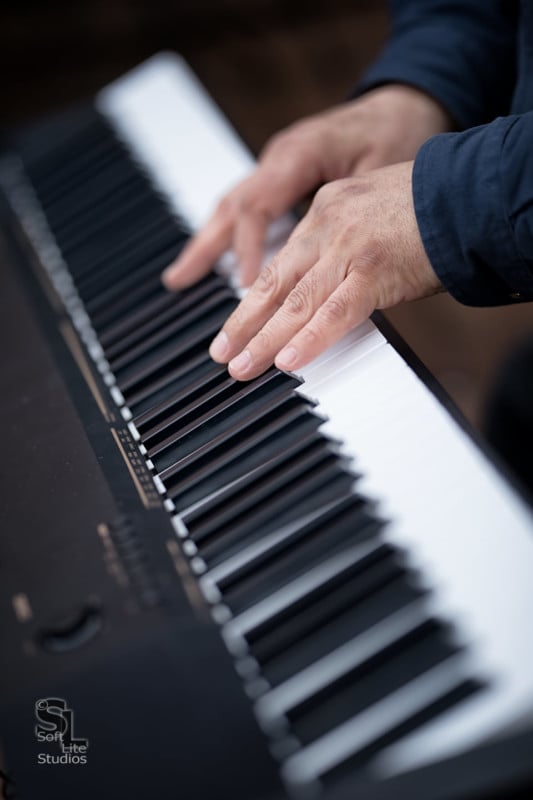
Next up was the neighborhood mime. The combination of contrast clothes and the stark makeup all combined with a subject that hams it up for the camera and won’t say no. Autofocus continues to be quick and accurate and the resulting image holds contrast between the blacks and whites very well. It was not an exceptionally sunny day or afternoon — more of a gray, chilly day and the lens is still picking up the available light nicely.
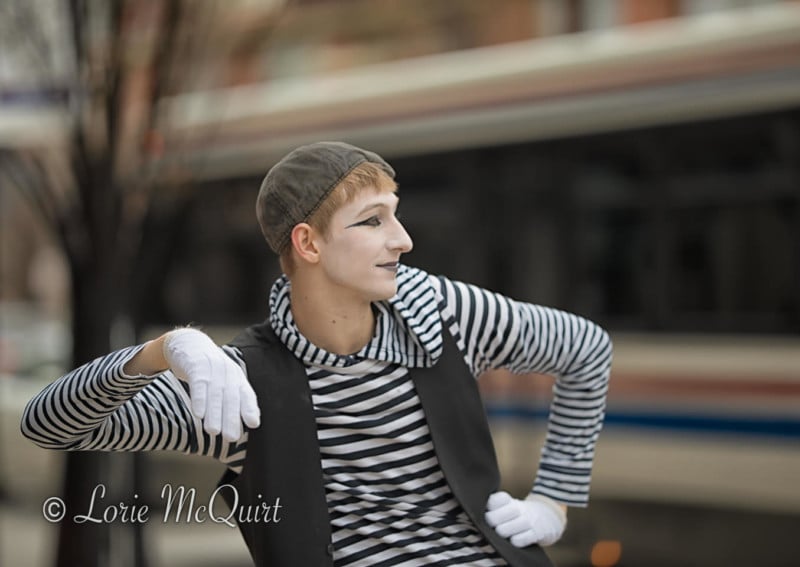
Further up the street, we notice an Oriental Folk Band and again I am encouraging my students to go for the simple composition — one that makes the subject clear. In my example image I am working lines, patterns, and subject isolation, even if it is more symbolic here than direct. In a complicated situation the lens picks up its focus point with no issues and the resulting picture again holds contrast well, display smooth transitions in depth of field and ultimately does a good job with the color in a reduced lighting situation.
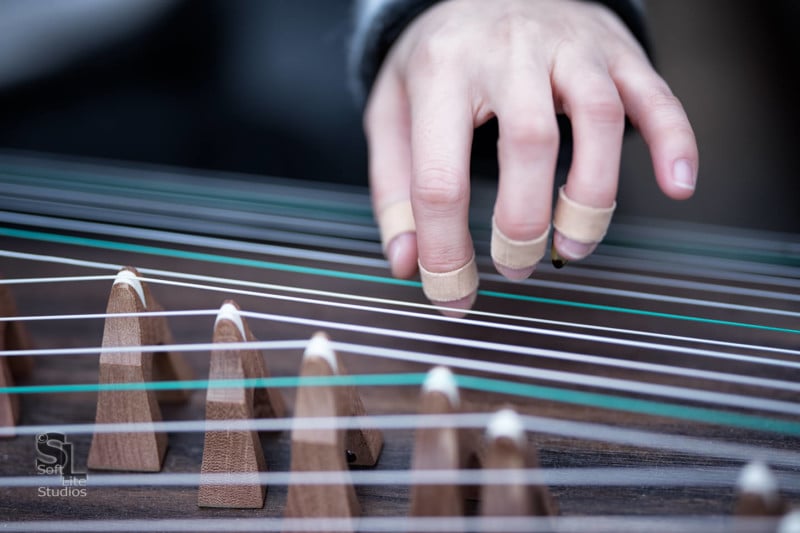
Over the years of shooting in this particular neighborhood, we have come to know some of the locals. They are often regular fixtures and tonight was no different. One of the locals refers to himself as “Santa Claus” (I have no idea why…) and he loves to have his picture taken. A quick introduction to some of the students and pictures are being captured. I grab a couple myself, never wanting to miss an opportunity to capture a little spontaneity and the result shot can be seen here.

Later inspection shows me that the details that lie within the focal plane are sharp, even with the extreme crop that you are seeing here.
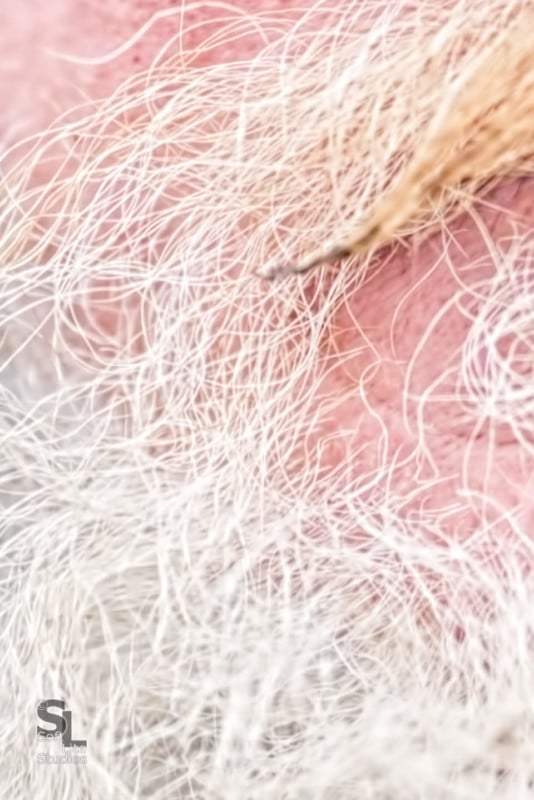
You’ll notice that throughout the article a few of the pictures contain the watermark of my fellow photography and business associate, Lorie McQuirt. Lorie just had to try out the lens and you can see some of her results as well. Lorie and I have shot the area many times and she immediately zoned in on an area we have shot before and captured this lady belting out some solid tunes. Again another low light situation, clean shadow details and really nice rendition of the tones and colors in the scene. The minimal depth of field with a wide open aperture really shows itself off nicely here and the resulting subject separation is striking.
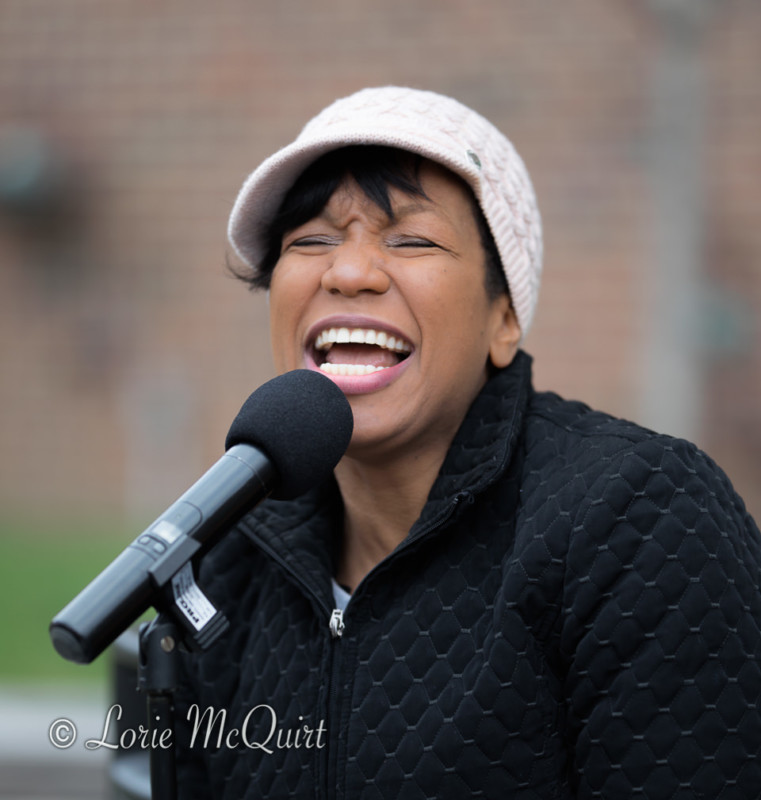
The late afternoon light is waning and the evening is starting to come on strong, as are all the specular lights one would hope for. I am now coaching my students to really look for situations where subjects can be aligned with light sources behind them. In specific, I am telling them that is possible they should be using points of light behind their images. In an example taking to illustrate this concept in the field, I find this little antenna ball designed, I assume, for helping you to locate your car in the parking lot (or to test Mickey’s aerodynamics, I am not sure which).
A little alignment of my position and careful placement of background lighting gives me example the shot I want to show my students. There are of course inspired (you don’t think I would claim anything less, do you?) and I am impressed with not only the shape of the bokeh, but the light orbs show nice clean edges and each one holds its color well.
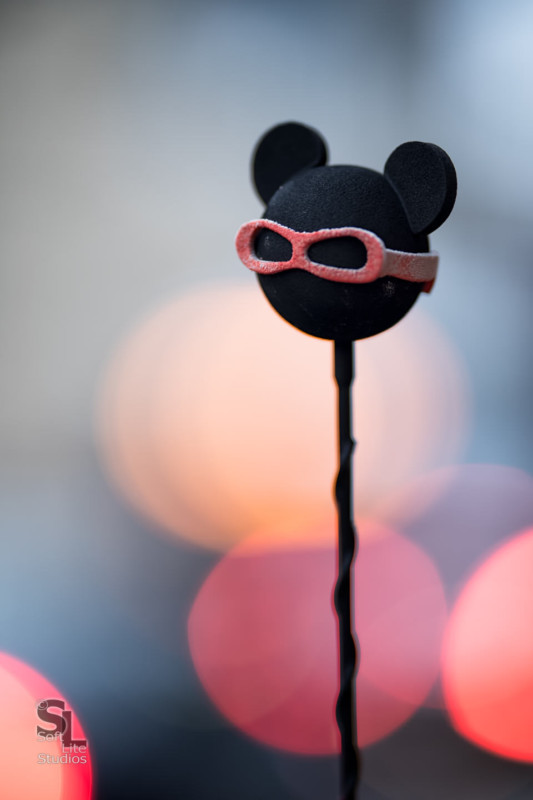
One last shot, just for me, to have a bokeh-only example from this lens. Again, I really like how the bokeh elements are forming, the clean edges of each of them, and the subtle yet clean colors. Clearly we are not looking for details in this image, yet at the same time it is easy to see the subtle gradations, in tone and in the shadows.
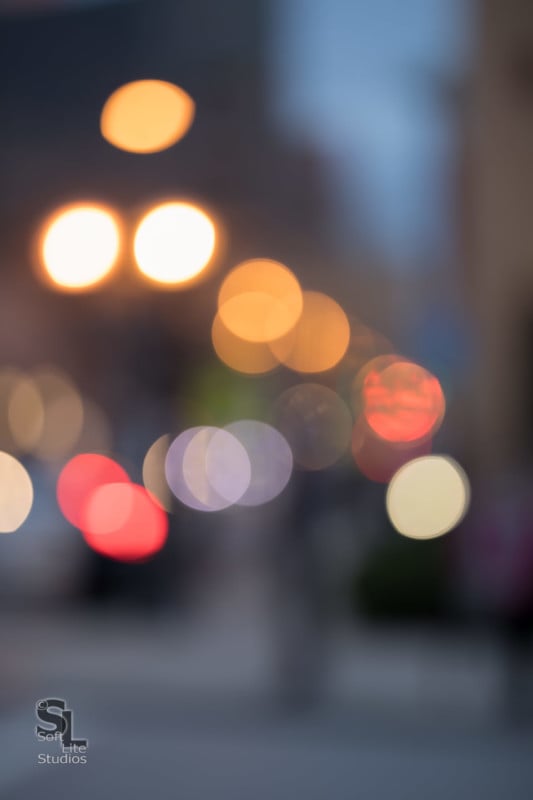
Pros and Cons
Let’s break down the pros and cons (yes there is a con or two…):
Pros
- Lens design
- Build quality
- Manual focus
- Autofocus
- Wide aperture
- Bokeh results
- Price (I believe this lens is an excellent value for the price)
Cons
- Weight (it’s hard to list this as a con, as physics is physics, but some will find this lens fatigues them)
- Size (see above comment, especially the physics part)
- Price (while I think it’s an excellent value, it is above the price point for some)
To Wrap it All Up
Well you have probably figured out by now I like this lens and really, image wise, what’s not to like? The results I am seeing represent their original scenes well, hold details in shadows nicely, provide lifelike colors with pleasing warm tones, and the bokeh… well not much more can be said about that. For portrait style images and narrower field of view images, this lens is a strong tool to have in the kit. So strong in fact, that my order has already been placed.
You can pre-order the Sigma 135mm f/1.8 Art Series lens at MPEX.com.
About the author: Tim Neumann is a photographer and educator who’s behind Soft Light Studios. He and Lorie McQuirt also teach through the MPEX Learning Studio and coordinate Central Ohio Photographic Society (COPS) meetings. You can find more of his work on his website. This article was also published here.
Image credits: Photographs by Tim Neumann, Lorie McQuirt, and Soft Lite Studios.